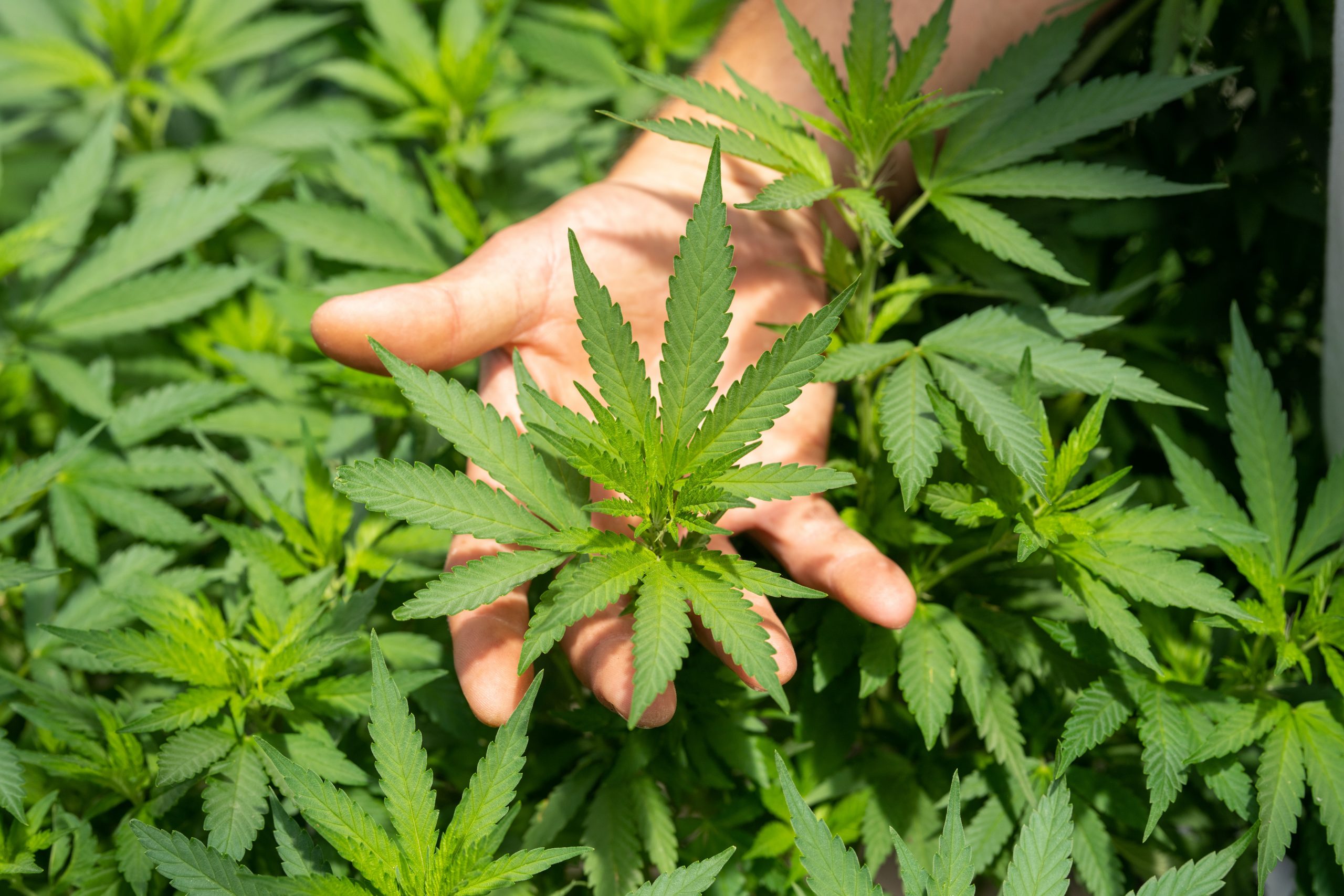In the United Kingdom, the evolving cannabis culture reflects a society in the midst of grappling with complex legal and social questions surrounding the use of this ancient plant. Despite the steady global shift towards liberalisation, the weed legal status in the UK remains firmly within the remit of controlled substances. However, as discussions widen and understanding deepens, it becomes increasingly pivotal to elucidate the variegated landscape of cannabis strains legal insights.
From the pungent aroma of a Skunk variety to the mellow hues of a Blue Dream, each weed strain carries with it a history, a set of characteristics, and potential medicinal benefits that contribute to the rich tapestry of cannabis culture in the UK. As we unwrap the layers of legislation and societal perception, we’ll discover not just the facts but also the narratives that have shaped the current status of cannabis across the nation.
The Landscape of Cannabis Legalisation in the UK
The cannabis legalisation debate in the UK persists amidst a global shift in attitudes towards marijuana. With several countries taking steps towards legalisation or decriminalisation, UK drug policy faces increased scrutiny. Current laws classify cannabis as a Class B drug, imposing strict penalties for its possession, distribution, and production. Yet, the discourse on weed decriminalisation gains momentum, with notable differentiation in approaches across UK regions.
Parliament has witnessed robust discussions on the prospect of changing the legal stance on cannabis. Calls to reassess the efficacy of current drug laws are influenced by the potential medical benefits of cannabis and the economic implications of legalisation. With public opinion gradually shifting in favour of a more liberal drug policy, stakeholders are evaluating the implications of such transformative changes to both society and the legal system.
While complete legalisation remains contentious, there is a palpable movement towards acknowledging cannabis’s therapeutic potentials. Debates often underscore the discrepancies between criminalisation and emerging scientific evidence supporting cannabis’s medical applications. Here’s a glimpse of the variegated legal landscape:
- Classification under UK law
- Regional deviations in enforcement
- Medical cannabis prescription framework
- Public opinion trends regarding legalisation
- Parliamentary motions and debates on drug policy reform
As the UK continues this important conversation, it is essential to carefully weigh the prospect of cannabis legalisation against the complex tapestry of societal, legal, and medical considerations.
A Guide to Different Types of Cannabis Strains
When delving into the rich tapestry of cannabis cultivars, one encounters a spectrum of Indica and Sativa strains, along with the fascinating hybrid weed varieties cultivated to harness specific effects of different strains. To guide you through this botanical maze, we’ll classify these varieties by their quintessential effects, flavours and medicinal benefits. Whether you’re an aficionado or a curious newcomer, understanding these distinctions is paramount in selecting a strain that aligns with your needs.
| Strain Type | Typical Effects | Common Flavours | Medicinal Uses |
| Indica | Relaxing, sedative | Earthy, sweet, pungent | Stress relief, insomnia, pain |
| Sativa | Energising, uplifting | Citrus, berry, spicy | Depression, fatigue, ADHD |
| Hybrid | Varied based on lineage | Diverse, from fruity to diesel | Custom-tailored to condition |
Indica weed strains commonly deliver a more body-centric effect, promoting deep relaxation and tranquility. They are ideal for evening use, with a reputation for aiding in sleep and mitigating bodily discomfort. In contrast, Sativa strains are known for their cerebral and mood-elevating properties, often preferred during daytime hours to bolster creativity and energy. Hybrid weed varieties bridge these two worlds, offering a harmony of effects engineered to emphasise desired characteristics and therapeutic benefits.
- Indica strains frequently feature compact, bushy plants with broad leaves, favouring colder climates.
- Sativa strains are typically taller, with narrow leaves and a penchant for warmer environments.
- Hybrids, as a product of crossbreeding, can display diverse growth patterns, a testament to their genetic lineage.
To enrich your cannabic lexicon, let’s consider some renowned strains: ‘Northern Lights,’ a paragon of Indica, known for its soporific impact, and ‘Sour Diesel,’ a Sativa-dominant powerhouse celebrated for its energising buzz. As for hybrids, ‘Blue Dream’ seamlessly melds the soothing comfort of Indica with the invigorating clarity of Sativa.
Whether you gravitate towards the calming embrace of Indica, the stimulating embrace of Sativa, or the balanced journey hybrid weed varieties offer, each type houses an array of strains with complex profiles. Their effects on the body and mind not only appeal to recreational consumers but also provide substantial medicinal advantages for those with specific health conditions, making the understanding of different strains vital for informed consumption and therapeutic application.
The Science Behind Cannabis and Its Effects
Unlocking the enigmatic properties of cannabis, we delve into the realm where scientific research on cannabis promotes a deeper understanding of how this plant interacts with the human body. Perhaps the most profound discoveries have been in the identification and assessment of the effects of cannabinoids and terpenes — elemental compounds found within cannabis — which have varied influences on human physiology and cognition.
THC and CBD stand as the vanguard of these compounds, primarily due to their ubiquity and conspicuous effects. Tetrahydrocannabinol (THC) is renowned for its psychoactive attributes, ushering in effects that range from euphoria and relaxation to alterations in perception and mood. In contrast, Cannabidiol (CBD) is non-psychoactive and has been studied for its potential in easing symptoms of anxiety, epilepsy, and chronic pain, among other conditions.
In the scientific theatre, these interactions are traced back to the body’s endocannabinoid system (ECS), which THC and CBD engage with, albeit in differing manners. Here’s a brief overview of their separate modes of action:
- THC binds with cannabinoid receptors in areas of the brain responsible for mood, memory, and pain, leading to its well-documented psychotropic effects.
- CBD, while not binding as directly, modulates receptors and enhances the presence of endocannabinoids in the body, leading to subtle but significant therapeutic outcomes.
Terpenes, aromatic compounds contributing to the scent and flavour profiles of different cannabis strains, have also come under the purview of researchers. Scientific research on cannabis posits that terpenes might influence the effects of cannabinoids through a phenomenon known as the ‘entourage effect’, potentially modulating the body’s responses to THC and CBD, and thus playing a pivotal role in their therapeutic applications.
As the landscape of legalisation evolves, so too does the urgency for robust scientific inquiry. It becomes paramount to understand not only the recreational thrills but also the medical employs of cannabis components. Current scientific research is diving into how the modulation of both THC and CBD effects, in conjunction with terpenes, can refine treatments for various maladies, reflecting an age where personalised medicine could be intertwined with cannabis-derived products.
Popular Weed Strains and Their Characteristics
In the burgeoning cannabis culture within the UK, aficionados are consistently seeking the top cannabis strains UK has to offer, known for their exemplary flavours and effects. Among the distinguished varieties, certain strains have gained notoriety for their unique strain flavours and robust potency profiles. These strains have carved a niche for themselves, becoming emblematic of the versatility and breadth of experiences cannabis can offer.
Flavour profiles range from the earthy and rich, redolent of lush forests, to the tangy zest of citrus notes that invigorate the senses. The potency profiles also vary greatly, with some strains offering a mild, serene experience while others pack a more potent punch, intended for seasoned consumers. These attributes contribute to the overall appeal and widespread popularity of individual strains, encapsulating users’ preferences and the medicinal or recreational outcomes they seek.
Real-world feedback underscores the reputation and effects of these celebrated strains. Anecdotal evidence from consumers reveals how certain strains have provided relief from stress, pain, and insomnia, whereas others are sought after for the euphoria and creativity they inspire. Such feedback, coupled with expertise from cultivators and industry connoisseurs, enriches the discussion around cannabis, leading to a more nuanced understanding of each strain’s impact and place within cannabis culture in the UK.
FAQ
What is the legal status of cannabis in the UK?
Cannabis is classified as a Class B drug under the Misuse of Drugs Act 1971 in the UK. Possession, cultivation, and distribution are illegal, with penalties including fines and imprisonment. However, it is legally prescribed for certain medical conditions under strict regulations.
Is there an ongoing debate about the legalisation of cannabis in the UK?
Yes, there is an ongoing debate within the UK regarding the potential legalisation or decriminalisation of cannabis. This includes discussions in Parliament, campaigns by advocacy groups, and public opinion surveys that report a growing acceptance of cannabis, particularly for medical use.
How does UK law classify and penalise cannabis use?
Under UK law, cannabis is classified as a Class B substance. Penalties for possession can include up to 5 years in prison, an unlimited fine, or both. Supplying and producing cannabis can lead to up to 14 years in prison, an unlimited fine, or both. These penalties can vary depending on circumstances and judicial discretion.
Can you explain the difference between Indica and Sativa cannabis strains?
Indica strains are traditionally associated with a sedative effect, helpful for relaxation and sleep, and commonly have a higher CBD to THC ratio. Sativa strains tend to provide more cerebral, energising effects, often used for creative and social activities, generally having a higher THC content. Hybrids combine traits from both.
What are hybrid cannabis strains?
Hybrid cannabis strains are a crossbreed between Indica and Sativa varieties. They are cultivated to combine specific traits from each parent strain, which can result in a balance of both relaxing and uplifting effects. Hybrids are designed to offer users a more tailored cannabis experience.
What are cannabinoids and terpenes?
Cannabinoids are chemical compounds found in the cannabis plant that interact with the body’s endocannabinoid system, producing various effects. The most well-known cannabinoids are THC (tetrahydrocannabinol) and CBD (cannabidiol). Terpenes are aromatic compounds that give cannabis its distinct scents and flavours and may also contribute to the overall effects of a cannabis strain.
Which are some of the most popular weed strains in the UK and their characteristics?
Some popular strains in the UK include Blue Dream, famed for its balance of relaxation and gentle cerebral invigoration; Skunk #1, known for its potent effects and pungent aroma; and Cheese, which is celebrated for its unique sharp, savoury flavour and consistent potency.
What factors influence the effects of different cannabis strains?
The effects of cannabis strains are influenced by several factors including the balance of cannabinoids (like THC and CBD), the profile of terpenes, the method of consumption, the individual’s physiology, tolerance, and even the environment in which the cannabis is consumed.










